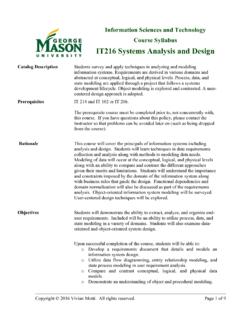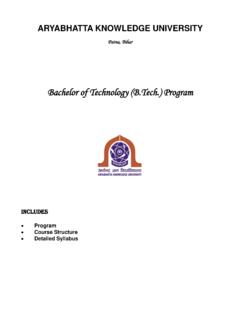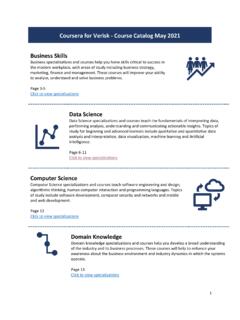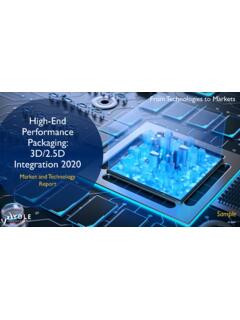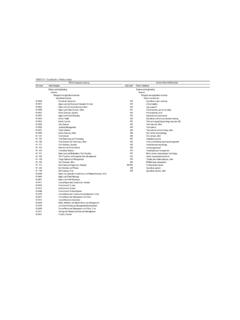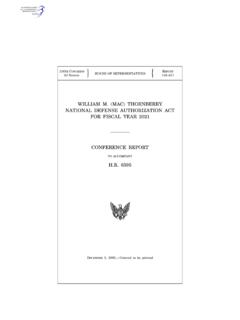Transcription of IT 103: Introduction to Computing Course Syllabus
1 Page1of7 The Department of Applied Information TechnologyThe Volgenau School of Information Technology & EngineeringGeorge Mason University4400 University DriveFairfax. VA 22030-4444IT 103: Introduction to ComputingCourse SyllabusCourse DescriptionIntroduction to Computing (3:1:2)This Course ,using both lecture and laboratory practice,introduces students to basic computer concepts in hardware, software, networking, computersecurity, programming, database, e-commerce, decision support systems, and other emergingtechnologies such as blogs, wiki, RSS, podcasting, and Google applications.
2 Additional lecturesexamine social, legal, ethical issues including privacy, intellectual property, health concerns, greencomputing, and accessibility. Students learn techniques to search, evaluate, validate, and citeinformation found online. Widely used applications including word processing, spreadsheets,databases, presentation, and web development software are of high school Education CourseAlmost no area of academic, professional, or personal life is untouched by the informationtechnology revolution. Success in college and beyond requires computer and information literaciesthat are flexible enough to change with a changing IT environment and adaptableto new problemsand purpose of the information technology requirement is to ensure that students achieve anessential understanding of information technology infrastructure encompassing systems anddevices; learn to make the most of the Web andother network resources; protect their digital dataand devices; take advantage of latest technologies.
3 And become more sophisticated technologyusers and Students will be able to use technology to locate, access, evaluate, and use information, andappropriately cite resources from digital/electronic Students will understand the core IT concepts in a range of current and emerging technologiesand learn to apply appropriate technologies to a range of 2013 SyllabusCopyright 2013 Kamaljeet Sanghera. All rights Students will understandmany of the key ethical, legal and social issues related to informationtechnology and how to interpret and comply with ethical principles, laws, regulations, andinstitutional Students will demonstrate the ability to communicate, create, andcollaborate effectively usingstate-of-the-art information technologies in multiple Students will understand the essential issues related to information security.
4 How to takeprecautions and use techniques and tools to defend against computer General Education mission statement is in the University Catalog (p. 9) and on the web successful completion of the Course , the students will be able to Understand basic functions of computer hardware and software components includingoperating system functions Identifyvarious networks (LAN, WAN, intranet), topologies (ring, bus, star), protocols(TCP/IP, SMTP, POP & IMAP, HTTP & HTTPS, DNS), media types (wire pair, coaxial cable,fiber optics, microwave, radio frequency, infra-red), and network hardware (router, hub,gateway) Know how to use search techniques (inclusion, exclusion, wildcards, phrase,Booleansearch)
5 , evaluate the information found on Web pages (chat rooms, newsgroups, RSS,podcasting sites, Wikipedia, blogs), and cite electronic and printed references Understand computer viruses, biometric devices, encryption technique, digital signature,email filtering, firewall, and precautions on Web Understand ethical issues regarding copyright, software licenses, information privacy,intellectual property, content filtering, Spam, and laws enacted with regards to SPAM,children s protection on Web, electronic communication, and electronic theft Understand IT impact on society (health and environment)
6 Design and createweb pages using XHTML Create blogs and wikis Use different application programs like word processing, spreadsheet, presentation, anddatabase management systems Understand the fundamentals of system analysis, life cycle of a program development andprogramming languages, artificial intelligence , and by ExaminationStudents who think they already know the materialin IT 103 shouldread the information on Creditby Examination posted 2013 SyllabusCopyright 2013 Kamaljeet Sanghera. All rights aretworequired textbooks for the NOTbuy used book ofIntroduction to Computer Information Systems, author: Steinberg.
7 Usedtextbooks do not contain CompAssess code which is required in the will be awarded in accordance with the GMU Grading System for undergraduate more grading scale for this Course is:97 100%A+Passing93 96%APassing90 92%A-Passing87 89%B+Passing83 86%BPassing80 82%B-Passing77 79%C+Passing73 76%CPassing70 72%C-Passing*60 69%DPassing*0 59%FFailing* Grades of "C-" and "D" are considered passing grades for undergraduate courses. However, aminimum grade of "C" isrequired in the BSIT program for any Course that is a prerequisite for oneor more other courses. This Course is a prerequisite for several courses in BSIT program more information on those scores may be adjusted by the Instructor to calculate final Introduction to Computer Information System,1st Edition.
8 ISBN: 978-0-7575-5191-8 Steinberg (Author).Available at GMU Fundamentals of Computing , 3rdedition. ISBN:978-0-7575-8556-2 Customizede-book, availableat bookandfrom publisher s website 2013 SyllabusCopyright 2013 Kamaljeet Sanghera. All rights grades will be determined based on the following components:ItemPointsPercentIn-class Exercises505%Project Part I (Research Paper)15015%Project Part II (Web site)15015%LabIn-labExercisesand HomeworkAssignments15015%MidtermPractice Test(conducted in lab)505%Final Practice Test (conducted in lab)505%Midterm Exam (conducted in lab)20020%Final Exam (conducted in lab)20020%Total Points1000100%These components are outlined in the following ExercisesThere will beseven(7)in-class exercises with thetwo(2)lowest gradesbeing eliminated.
9 Thus,onlyfive(5)in-class exercises count in the overall grade for the makeups for any missedin-class exercises for any Part I and II:See the project page in the lecture Blackboard schedule, assignments and their due dates are contained in the labsyllabus posted on labBlackboard and Final Practice TestsMidterm and final practice tests are conducted in lab. Their dates are included in the labBlackboard in both practice tests is (midterm and final)Both midterm and final exams are closed book . Exams are conducted on CompAssess in lab. Youmust bring your valid GMU ID to lab on the scheduled exam makeups for missed exams for any grades will be posted toPatriotWeb, which is the only vehicle for students to obtain thosegrades.
10 A student with a "hold" on his/her PatriotWeb account will be unable to access final gradesuntil thehold has been removed by the 2013 SyllabusCopyright 2013 Kamaljeet Sanghera. All rights Assignment1 Introduction to the courseProject part I: Research paper specificationreviewLibrary and Internet ResearchResearch paper specificationsposted under Project s folderInfoGuide( )2 Internet and WWWC hapter 23 HardwareChapter 34 SoftwareChapter 45 Data Communications and NetworkingChapter 56 Systems AnalysisProject part I:Research Paper DueMidterm Exam ReviewChapter 6 Review Sheet posted onBlackboard7 Midterm Exam8 XHTMLP roject part II.


